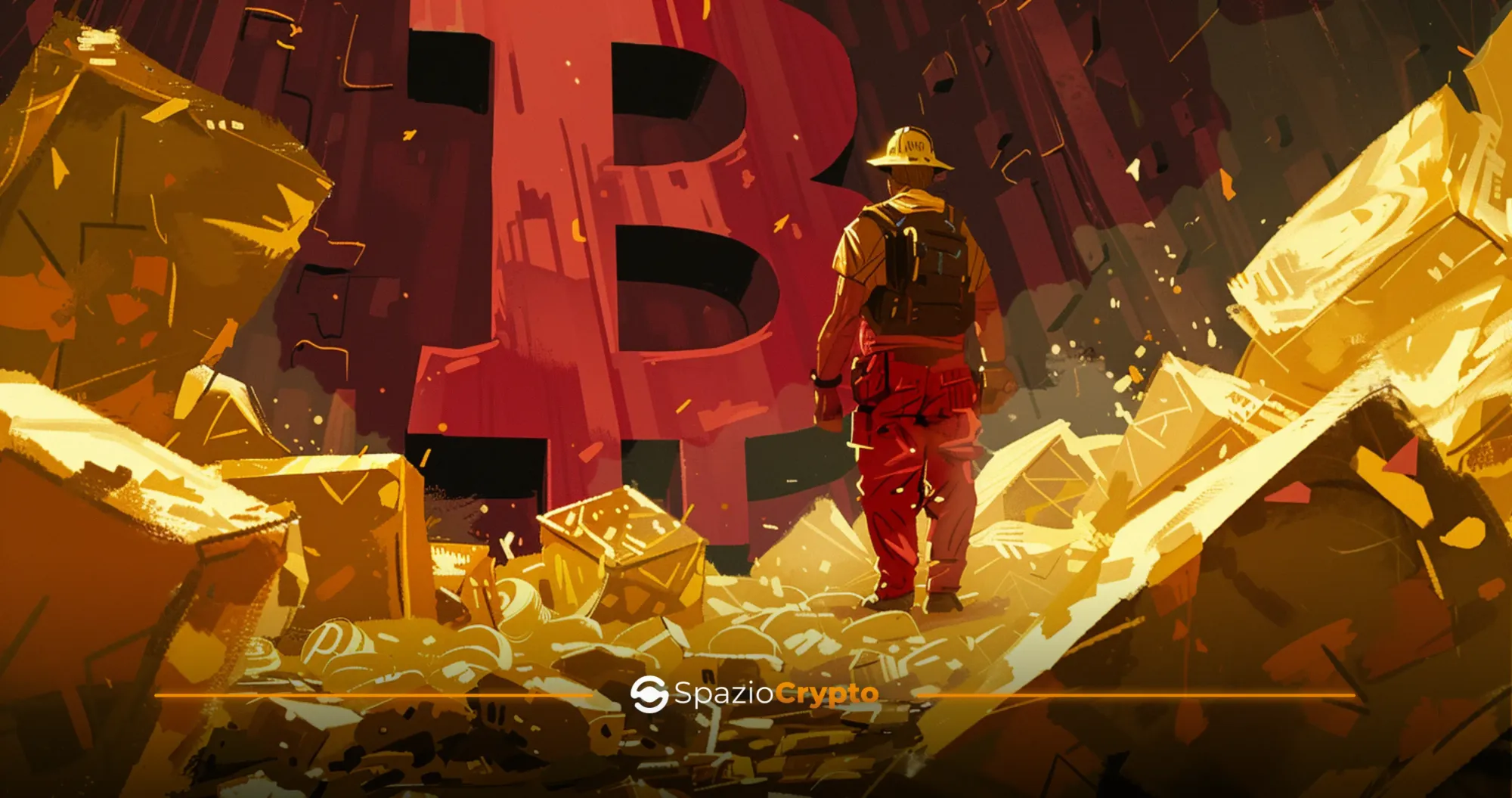
After the Halving, Bitcoin's Hash Rate Drops
After the halving at the end of April, Bitcoin's hash rate dropped considerably. Let's take a look at the causes and what we can expect in the near future.

After the halving at the end of April, Bitcoin's hash rate dropped considerably. Let's take a look at the causes and what we can expect in the near future.

Get the latest news, learn from experts, discover new tools, and find inspiration right in your inbox.
No spam. Unsubscribe anytime.
A powerful documentary on how Bitcoin and blockchain are reshaping money, power, and geopolitics—from El Salvador’s Bitcoin experiment and Europe’s regulatory revolution to the rise of decentralized finance and the new global financial order.
After the fourth halving of Bitcoin, inevitably, mining companies began shutting down and taking offline machines that were no longer profitable. As a result, there was a noteworthy drop in the hash rate of the Bitcoin network to 575 exahash per second (EH/s) on 10 May, which was followed by a rise that is slowly continuing these days to 586 EH/s at the time of writing.
What is the Hash Rate?
After reading the introduction, some readers may legitimately wonder what we are talking about. Well the hash rate, for a miner, is a key security metric, one of the most important. It reports the value of the hashing power (let's call it calculation power, for the sake of clarity) over the entire network within which BTC or other currencies are being mined. Generally, when we talk about hash rate, we are referring to Bitcoin.
The value is important, since no miner knows the exact hash rate of the BTC blockchain precisely, since it is never revealed. However, it is possible to estimate it, with a low margin of error, considering the difficulty of mining the current blockchain and the number of blocks that have already been added. If the local network on which new blocks are being produced has a higher hash rate, then it will be more secure and more resistant to attacks. This allows the miner to operate with greater peace of mind.
Only a Momentary Hash Rate drop?
That a hash-rate drop would occur as a result of halving had been widely predicted. On 19 April, a few days before the halving of rewards for BTC miners, Coinshares predicted a momentary drop in the hash rate for 2024 that would precede a surge during 2025.
According to the asset management platform, therefore, next year will see a significant increase in computing power on the BTC network. The current contraction would be due to halving and rising electricity costs, two issues that could be resolved in the coming months if miners develop a cost optimisation strategy and increase the efficiency of their operations.
After switching off the less powerful machines, the conditions are in place to achieve both results.
What is an ASIC?
When we speak of an ASIC, we are referring to an application-specific integrated circuit, i.e. a computer device, based on a chip or integrated circuit, developed specifically to mine cryptocurrencies. Precisely because of the hash rate, it is impossible to operate without it, because a computer battery cannot reach such computational speeds without the use of media.
Mining profitability depends on energy and infrastructure costs
TeraWulf, the world's eighth largest mining company worth some $670 million, is planning toexpand its operations, despite the halving of rewards for those who mine. In their view, only smaller competitors with less energy-efficient equipment will be in trouble. Anyone with a quality infrastructure and the ability to source energy at an acceptable cost has a very good, still very profitable asset, at least until the next halving.
The profitability of mining is directly related to the amount of electricity needed to run the operation. Some of the older ASIC models, such as the popular M50S++ and S19 XP, require a lot of power. The most powerful miners got rid of them long ago, but those still relying on their services may operate with no profit margins now that the rewards are less attractive.
At SpazioCrypto we align ourselves with Coinshares' position and believe that hash rate issues will go away along with the swallows known to migrate during the summer. The difficulties after the halving are physiological and do not mean that a downturn is underway within the Bitcoin ecosystem.
If you want to follow the development of this story, and the others that characterise this dynamic sector, don't miss any updates: check out our news!
Read Next
SEC closes FTX case: penalties for former executives
The SEC files the FTX case with penalties and bans for Ellison, Wang and Singh after the 2022 collapse.
Wall Street between AI and Santa Claus Rally: risk or opportunity
Wall Street is torn between the seasonal year-end rally and doubts about the sustainability of investments in artificial intelligence, while Bitcoin and risk assets show signs of weakness.
YouTube integrates PayPal's PYUSD to pay US creators
YouTube introduces PayPal's PYUSD as an optional payment method for eligible creators in the US, opening up stablecoins in mainstream monetisation streams.
Light Penalty for the 40 Billion Collapse: Why Do Kwon took Less than SBF
The US federal judiciary has issued conflicting sentences in the most egregious crypto cases. Prosecutorial conduct has weighed more heavily than economic loss in the disparity of punishment between Do Kwon and SBF.